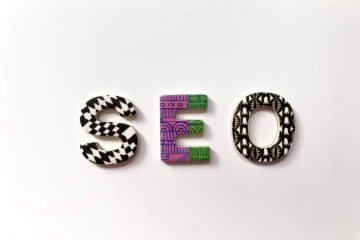What is SEO?
If you’re a business owner, you may have heard of search engine optimization (SEO). According to GlobalWebIndex, 81% of people use search engines to find a product or service. Despite that, only 30% of business owners have an SEO strategy in place.
SEO is not as complicated as it seems.
SEO stands for “search engine optimization.” In simple terms, it means the process of improving your site to increase its visibility when people search for products or services related to your business in Google, Bing, and other search engines. Because organic search is the most prominent way for people to discover and access online content, a good SEO strategy is essential for improving the quality and quantity of traffic to your website.
Look at it this way. When someone types “vegan Mac and Cheese” into the Search Engine, they’re likely looking for a recipe, ingredients, and instructions on how to make it. If you wrote an article about making Vegan Mac and Cheese, you’d want people to find your recipe. For anyone to find it, you need to rank above all the other websites with recipes for Vegan Mac and Cheese. It’s not easy, but that’s what SEO marketing is all about.
To better understand how you can rank your content higher in the search engines, you need to first understand how search works.
Today, it’s not about ‘Get the Traffic’ — It’s about ‘Get the Targeted and Relevant Traffic.’
Adam Audette
Let’s go further on understanding SEO’s most important ranking factors such as:
- Keyword Research
- Website Content
- On-page SEO
- Off-page SEO
- Technical SEO

Keyword Research
What is a keyword? Keyword research is the process of finding and analyzing search terms that people enter into search engines intending to use that data for a specific purpose, often for search engine optimization (SEO) or general marketing.
For example, if you went over to Google, and typed in vegan recipes, the keyword would be vegan recipes. This means the entire phrase is a keyword, not the individual words do not ‘vegan’ or ‘recipes’ but as a whole vegan recipe.
To be successful in SEO, you need to figure out what your potential customers would search in Google to find your website and the service or product you offer.
It’s a simple process, but two things need to be true to do it well:
- You need to have good knowledge of your industry.
- You need to understand how keyword research tools work and how to get the most out of them.

So, putting these two concepts together: SEO content is any content created to attract search engine traffic. Here’s a quick refresher on what you’ll need to do to SEO your web content:
- Keyword Research: If you want to generate traffic through search, it’s best to do keyword research before you start writing. This way, you can focus on keywords for which a certain amount of search volume already exists – in other words, write toward topics (or find keyword niches!) that people are already searching for information about.
- Keyword Optimization: Know where and how to use keywords in your content for maximum searchability.
- Content Organization: The content on your site should be organized in a logical way. This is not only good for SEO; it also helps visitors on your site find other related content easily.
- Content Promotion: Increase visibility to new content you create by sharing it on social networks and building links to your content (both internally and from external sites).

On-Page SEO
On-page SEO (also called on-site SEO) is the practice of optimizing web pages to rank higher in search engines. It includes optimizations to visible content and the HTML source code.
Search Engines are ultimately looking for the most relevant search result for a query, so their algorithms also look for other relevant content on the page. If your page is about vegan snickers bars and you don’t mention different vegan recipes, Search Engines know there are probably more relevant results out there.
On-page SEO doesn’t end with a perfect page; you have to constantly review and audit your content to make sure it’s good, relevant, and up to date. To achieve the highest rank on SEO you’ll need to focus on these techniques:
- Integrate relevant keywords into your pages
- Optimize your title tag and meta description
- Create user-friendly content
- Optimize images
- Optimize your URLs
- Use internal links on your pages
- Improve site load time
- Add responsive design to your website

Off-Page SEO
In short, covers all SEO tactics that take place outside of your website.
Includes those tactics that relate to activities carried out away from your website. Link building is often considered to be the main off-page tactic, but this also includes tactics such as content marketing, social media, appearing on podcasts, landing reviews, building local citations, and more.
How Does Off-Page SEO Link Building Work?
Link building is the foundation of off-page SEO. There are three main types of backlinks defined by how they are earned; natural links, manually built links, and self-created links.
Natural links occur voluntarily without any interference from the website owner. For example, a blogger may publish a post on the season’s latest fashion and include a link to your clothing store.
Manual links are required strategically by getting customers, influencers, and publications to link to your website by sharing your content. These take time to build, as they’re mostly based on relationships and brand credibility. They can also be done through influencer marketing, which tends to be based on paid or trade exchanges.
Lastly, there are self-created backlinks, which are ethically frowned upon and a big no. These are created through dubious backlinks in online directories, forums, blog comments, and press releases with optimized anchor text.
Technical SEO

Search engines give preferential treatment in search results to websites that display certain technical characteristics — for example, a secure connection, a responsive design, or a fast-loading time — and technical SEO is the work you need to do to ensure your website does so.
Below you’ll find a checklist of important steps you can take to ensure your technical SEO is up to scratch.
Use SSL
Secure Sockets Layer – SSL – is a security technology that creates an encrypted link between a web server and a browser. You can spot a site using SSL fairly easily: the website URL starts with ‘https://’ rather than ‘http://.’
So it makes sense, where possible, to ensure your site is secure – this can be done by installing an SSL certificate on your website, though most top website builders now include SSL by default.
Ensure your site is mobile-friendly
A ‘responsive’ website design adjusts itself automatically so that it can be navigated and read easily on any device. So it makes sense to ensure that your website is fully responsive and will display in the best format possible for mobile, tablet, or desktop users.
Speed your site up
Search engines prefer sites that load quickly: page speed is considered an important ranking signal. To get the desired speed of your site must take some actions on:
- Use fast hosting
- Use fast DNS Provider
- Minimize ‘HTTP requests’ – keep the use of scripts and plugins to a minimum
- Ensure your image files are as small as possible (without being too pixelated)
- Minify your site’s code – rid of any unnecessary spaces, line breaks or indentation in your HTML, CSS and Javascript (see Google’s Minify Resources page for help with this).



0 Comments